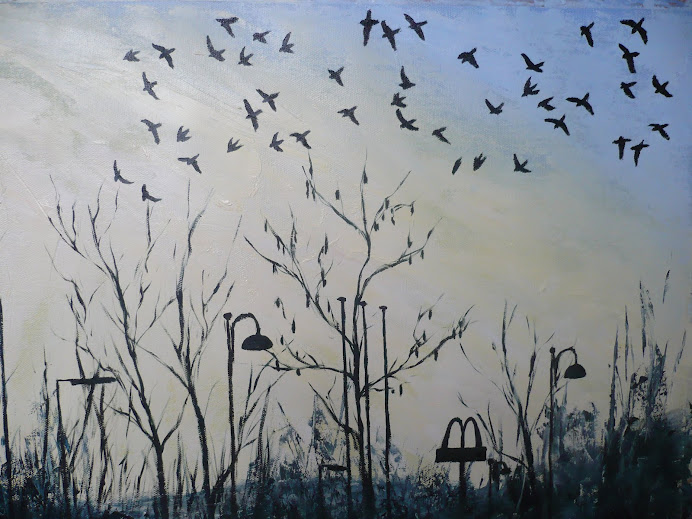Though I didn't find this as easy to read as the book "The Story of Art" by the same author is was still very interesting and there are a few passages I want to make note of here. The first is from page 4 which surprised me with its honesty and forward thinking for essays written in 1960; "the first prejudice teachers of art appreciation usually try to combat is the belief that artistic excellence is identical with photographic accuracy." This is something that I've been guilty of in the past so it was with relief that I read this and could put into motion the ability to change this.
Gombrich is also aware of the high illusionist abilities of the Old Master painters, such as Caravaggio and Da Vinci, with their perfect, clean, crisp paintings lead us to assume that the same standard of excecution is to be sought after now; "When we deal with masters of the past who were both great artists and great 'illusionists', the study of art and the study of illusion cannot always be kept apart." But it is important to realise now that the role of painting has changed from what it was to something richer and more multi layered than just illusion. However the description made by Plato in the "Sophist" and quoted by Gombrich on page 7 is a beautiful homage to the ability of art to defy reality, that it is a "man-made dream for those who are awake."
There is a significant section at the beginning of the book devoted to the developments made by Constable in his search for greater realism in his paintings which consisted in relinquishing the styles of the past and the assumed standards for painting, the classic example being his use of green paint for grass when it had previously been painted as brown. This radical shift in the creation of paintings is written about in interesting terms in the book on page 30; "much of the knowledge gained by these experiments in the past has become common property today...Indeed there are artists who think the field to which Constable devoted his scientific endeavours has been fully investigated by now and that they must turn to different areas for experiment. Instead of exploring the visible world, they probe the mysterious of the unconscious mind or test our response to abstract shapes." It is humbling to think of how far the developments in art have come, and interesting to think of how much an effect the invention of photography must also have contributed to the new areas in painting.
On page 55 Gombrich quotes Emile Zola who said that a painting was "a corner of nature seen through a temperament," which to my mind brings back what I'd been reading about Piper and the way that he viewed the world around him, surely inspired to a great degree by his own passions and personality. There is a quote in the "Finding Your Way" course book which says "A work of Art created without emotion is not Art" and this again ties in with the quote above. It could also be looked upon that any painting, landscape or not, is created through a temperament.
I have been interested in the work of Lucian Freud recently, for a number of my projects both written and painted, so it was humorous to read on page 80 about this "young" artist (bearing in mind it was written in the 60's). But what was really interesting (age aside) was his input into the illusionist, Pygmalion powers of painting; "A moment of complete happiness never occurs in the creation of a work of art. The promise of it is felt in the act of creation, but disappears towards the completion of the work. For it is then that the painter realises that it is only a picture he is painting. Until then he had almost dared to hope that the picture might spring to life." I find this deeply touching, especially as it is primarily his family, friends and lovers that he paints (as he has said in the past who else could he paint with such honesty? -very much like Frank Auerbach). But is there also an element of preservation in his paintings? Especially in the deeply touching ones of his mother. His paintings contain that glimmer of life, that Pygmalion power that they could move, yet you are also aware of their encasing in paint, as he is aware too.
Another point of the book which made me laugh was page 98 and the story about Matisse and the lady who came to visit his studio who said " 'But surely, the arm of this woman is much too long,' the artist replied politely, 'Madame, you are mistaken. This is not a woman, this is a picture.' " This shows a different outlook on the act of painting to the one by Freud, as he realises from the outset that his is nothing more and nothing less than a painting.

No comments:
Post a Comment